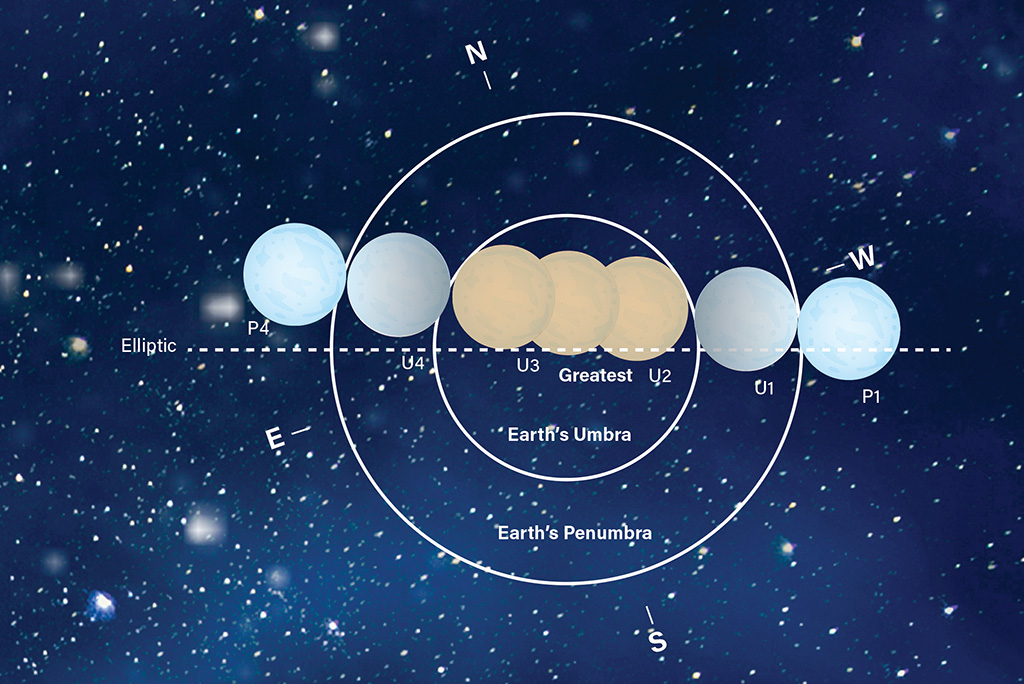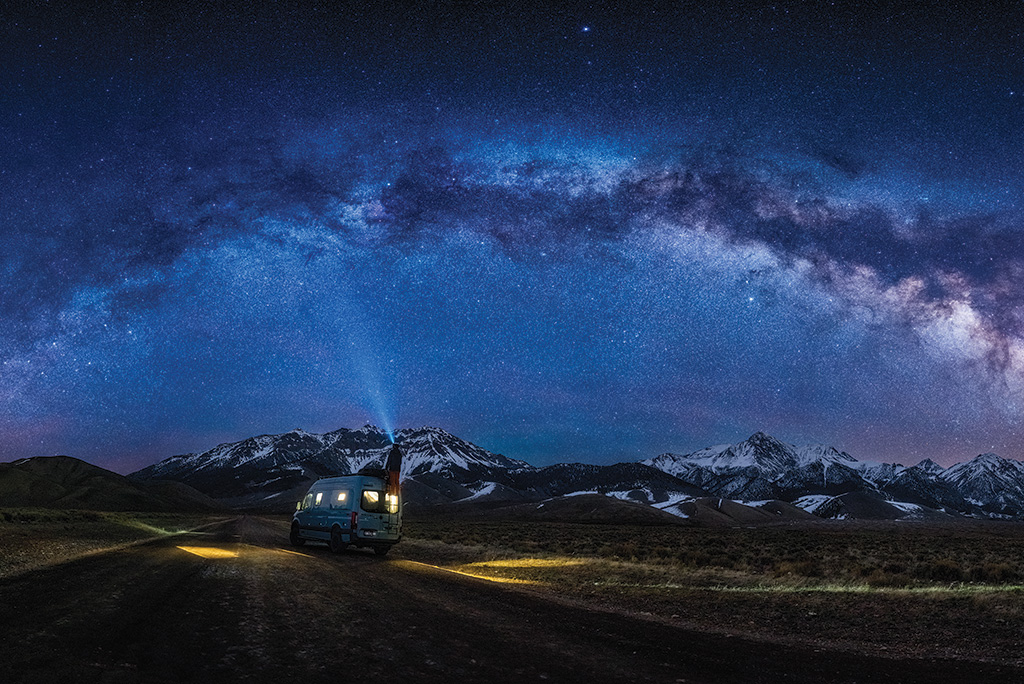Ever since December 2017, when the International Dark Sky Association designated 1,416 square miles around Stanley the “Central Idaho Dark Sky Reserve,” dark sky tourism has been a burgeoning segment of the Wood River Valley’s tourism industry.
Savvy seekers of pristine night skies plan their visits to the Reserve around astronomical events, ranging from the days each month when the moon is near new (and thus below the horizon during the nighttime hours), to annual meteor showers, to special events like eclipses. Want to know what to look for in the year ahead?
TIPS FOR WINTER SKY WATCHERS
-Hearty souls who wish to observe during the winter months, when nights are long and twilight ends early, should dress for temperatures 10°-15° F colder than the overnight low (including wind chill).
– Telescope views will be sharpest not with calm air but when there’s a five to 10 mile per hour breeze, which produces laminar (layered) air flow that quashes convection (turbulence). A good touchstone for how crisp the views will be is to look carefully at the stars: if they’re twinkling madly, expect blurry, writhing images. The less they twinkle, the more detail you’ll see.
-To minimize condensation on optics, let your binoculars or telescope cool to ambient temperatures before removing lens/mirror caps at the start of the night, and make sure those
caps are on before bringing them inside at the end of the night.
– The human eye does most of its adjustment to darkness five to 15 minutes after exposure to bright light, with slower improvement over the next couple of hours. Using a flashlight with a red filter can allow you to read without spoiling your dark adaptation.
– If you’re using a cell phone app to identify sky objects, research how to turn on “night sky mode,” which dims and reddens the screen.
LUNAR ECLIPSE
November 8, 2022 (Election Day)
The premier sky event of fall 2022 will be a total lunar eclipse arriving in the early morning hours of Tuesday, November 8. The eclipse begins at 1:02 a.m. as the moon begins to enter Earth’s penumbral (partial) shadow (P1), although no visible change will occur until around 1:30 a.m., with a subtle darkening of the moon’s upper left edge. The most conspicuous phase of the eclipse (U1) begins at 2:09 a.m., when a growing dark “bite” appears on the upper left edge of the full moon as it begins to enter Earth’s full (umbral) shadow. Totality, when the moon appears dark red/orange, is from 3:17 a.m. (U2) to 4:42 a.m. (U3), with greatest eclipse at 3:59 a.m. A bright, white sliver appears at the upper right edge as the moon begins to emerge from the umbral shadow. The last bit of umbra leaves the moon at 5:59 a.m. (U4), although it may be behind the mountains by then, depending on the height of your western horizon. The final stages of the eclipse comprise only a slight, slowly diminishing shading on the moon’s lower edge. Although the eclipse ends with the moon’s egress from the penumbral shadow (P4) at 6:56 a.m., the moon’s appearance will have returned to normal by about 6:30 a.m.
SOLAR ECLIPSE
October 14, 2023
Grab your eclipse shades for the first solar eclipse visible in Idaho since 2017’s spectacular total eclipse. This partial eclipse, from 9:09 to 11:50 a.m., will see the sun 82% obscured at maximum (10:26 a.m.). Those willing to travel to northern Nevada or southern Utah can experience this eclipse as an annular (“ring of fire”), but no matter where you view it from, proper eye protection (#14 or darker welder’s glass, or certified eclipse shades) is a necessity.

Figure 1: Phases of the November 8, 2022 total lunar eclipse. Note that while the moon moves upward relative to Earth’s shadow as the eclipse progresses, the moon and the shadow will be moving downward (toward the western horizon) throughout. (Adapted from a NASA diagram.)
PLANETS
After a drought of evening planets since February 2022, Saturn and Jupiter are now well above the horizon at the end of twilight. Saturn is the brightest object in the southeast and Jupiter the brightest in the east at 9:15 p.m. Saturn will vanish into the sun’s glare in late January, right around the time Venus emerges from behind the sun to become the “Evening Star.” Venus retreats sunward in late July, emerging as the “Morning Star” in the pre-dawn in late August and remaining so through the end of 2023.
Look for a pretty pairing of Saturn and Venus in southwestern twilight on January 22.
Jupiter passes quite close to Venus in the west-southwest on March 1 before it, too, vanishes into the sun’s glow in mid-March.
The “twilight planet,” Mercury, appears low in the east in the pre-dawn of the second week of October, low in the west after sundown in the second week of April, and low in the east in the pre-dawn in late September 2023, but it requires a flat horizon to spot.
Mars is relatively close to Earth on December 1, arcing high overhead around 1 a.m. and providing good telescope views with minimal atmospheric distortion. The Red Planet lingers in the evening sky until late August 2023 before the sun overtakes it.
METEOR SHOWERS
This winter and spring bring tough sledding for meteor watchers, with mid-December’s Geminids, early January’s Quadrantids, and early May’s Eta Aquariid showers all outshone by bright moonlight. The summer’s iconic shower, the Perseids, will likely put on the best show in 2023 in the early morning hours of Sunday, August 13, 2023 with meteors coming from the northeast and the thin, crescent moon not rising until 3:45 a.m., about an hour before the onset of morning twilight. Your best accessory will be a lounge chair; a telescope or binoculars have too narrow of a field of view to catch most of the shooting stars.
NEW MOONS
Full moons are not ideal for stargazing, for obvious reasons. The week centered on the new moon offers the darkest skies.
Month Full Moon New Moon
September 2022 10 25
October 2022 9 25
November 2022 8 23
December 2022 7 23
January 2023 6 21
February 2023 5 19
March 2023 7 21
April 2023 5 19
May 2023 5 19
June 2023 3 17
July 2023 3 17
August 2023 1 16


